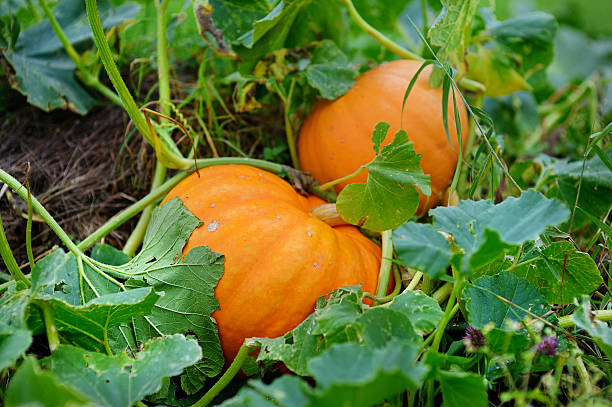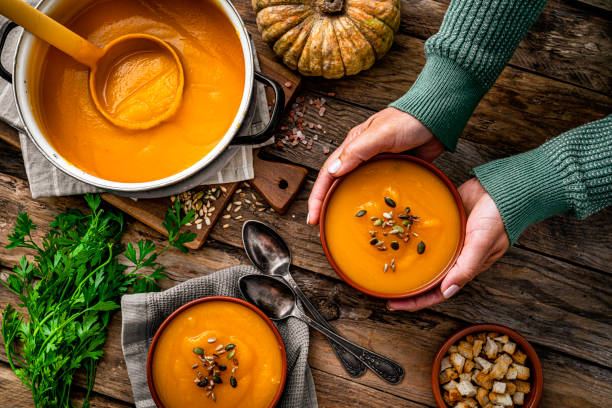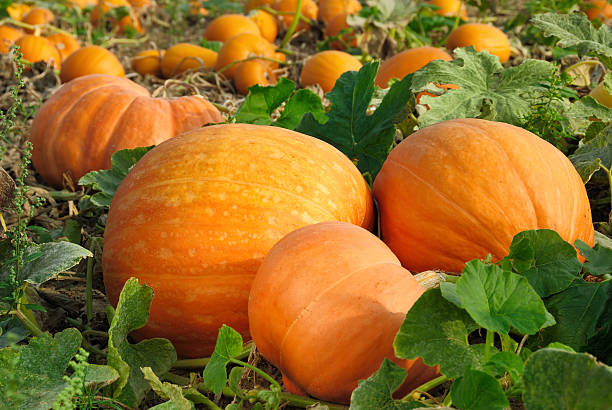Living with diabetes means being mindful of everything you eat. Some foods can cause your blood sugar to rise quickly, while others can help keep it stable. It is one of those powerful foods that can make a real difference. Full of nutrients, fiber, and antioxidants, pumpkin supports blood sugar control and overall health. Adding it to your meals can be a smart and tasty way to stick to a diabetes-friendly diet.
In this post, we’ll dive into the benefits of it for diabetes, fun ways to enjoy it, and easy tips to make it a regular part of your daily routine!
Is Pumpkin Good for Diabetes?
Absolutely! It is low in calories and packed with fiber, making it a smart and healthy choice for people with diabetes. Its high fiber content helps slow down digestion, which can keep blood sugar levels steady. Plus, it has a low glycemic load, meaning it won’t cause sharp spikes in blood sugar. Adding it to your diet can be an easy way to enjoy delicious meals while managing your blood sugar more effectively.
Here’s why it is an excellent choice for managing diabetes:
- High in fiber: It is rich in fiber, which slows digestion and helps prevent blood sugar spikes.
- Low in calories: With fewer calories, it can support weight management — a key part of diabetes control.
- Rich in antioxidants: It contains powerful antioxidants that help fight inflammation and protect your cells from damage.
- Packed with vitamins: It is loaded with important vitamins like A, C, and E, which help strengthen your immune system.
According to the U.S. Department of Agriculture (USDA), one cup of cooked pumpkin contains only 49 calories, 2.7 grams of fiber, and 12 grams of carbohydrates, making it a smart and nutritious addition to a diabetes-friendly diet.

Nutritional Benefits of Pumpkin for Blood Sugar Control
Let’s take a closer look at the key nutrients that make it a true superfood for people with diabetes:
1. Fiber Helps Stabilize Blood Sugar
Fiber plays an important role in slowing the absorption of sugar into the bloodstream. This helps prevent blood sugar levels from rising too quickly after you eat. It is a great source of fiber — just one cup gives you about 10% of your daily fiber needs! Adding it to your meals can be an easy way to help manage blood sugar naturally.
2. Low Glycemic Load
Even though it has a medium glycemic index (GI), its glycemic load is low. This means that when you eat it in normal portions, it has only a small effect on your blood sugar levels. It’s a smart and safe choice for a diabetes-friendly diet.
3. Antioxidants Fight Inflammation
It packed with beta-carotene, a powerful antioxidant that gives it its bright orange color. Research suggests that antioxidants like beta-carotene can help reduce inflammation, which is often linked to high blood sugar levels and insulin resistance (source). Adding it to your meals is a simple way to boost your antioxidant intake and support better blood sugar control.
How to Eat Pumpkin for Diabetes Management
Looking for easy ways to add it to your diet without throwing off your blood sugar? Here are some simple and tasty ideas to enjoy it while keeping your meals diabetes-friendly!
1. Fresh Pumpkin
You can roast it, mash it, or turn it into a delicious soup. Fresh pumpkin is naturally low in carbs and packed with essential nutrients, making it a healthy choice for managing blood sugar levels.
2. Canned Pumpkin
Choose 100% pure pumpkin with no added sugars. Canned pumpkin is just as nutritious as fresh pumpkin and offers the added benefit of convenience, making it easy to incorporate into your meals without any extra effort.
3. Pumpkin Seeds
Don’t throw away the seeds! The seeds are rich in magnesium, a mineral that plays a key role in blood sugar control. Eating these nutrient-packed seeds can be a simple and tasty way to support your diabetes management.
Here are some easy and delicious ways to enjoy it:
- Roasted for a crunchy and satisfying snack
- Sprinkled over salads for added texture and nutrition
- Mixed into yogurt or oatmeal for a nutrient-packed breakfast
These simple ideas make it easy to enjoy the health benefits of it throughout your day!

Healthy Pumpkin Recipes for Blood Sugar Control
1. Simple Pumpkin Soup
Ingredients:
- 2 cups cooked pumpkin
- 2 cups low-sodium vegetable broth
- 1 small onion, chopped
- 2 cloves garlic, minced
- 1 tablespoon olive oil
- Salt and pepper to taste
Directions:
- Sauté onion and garlic in olive oil until soft.
- Add pumpkin and broth.
- Blend until smooth and season with salt and pepper.
Why it’s great: Low in carbs, high in fiber, and comforting!
2. Pumpkin Smoothie
Ingredients:
- ½ cup canned pumpkin
- 1 cup unsweetened almond milk
- ½ banana
- 1 teaspoon cinnamon
- A handful of ice cubes
Directions:
- Blend all ingredients until creamy.
- Enjoy immediately!
Why it’s great: A fiber-filled treat that won’t spike your blood sugar.
Tips for Including Pumpkin in a Diabetes-Friendly Diet
It can be a powerful addition to your diabetes management plan, but portion control is essential. Here are some simple tips to enjoy it without affecting your blood sugar:
- Stick to small portions: A safe serving size is typically ½ to 1 cup.
- Avoid sugary pumpkin products: Skip desserts like pumpkin pies and sweetened pumpkin lattes, which are high in sugar.
- Pair pumpkin with protein: Combining it with protein-rich foods like chicken or Greek yogurt can help slow down sugar absorption.
- Use spices like cinnamon: Cinnamon not only adds flavor but also has natural blood sugar-lowering properties!
By following these tips, you can enjoy it while keeping your blood sugar in check.
Pumpkin Seeds: A Secret Weapon for Blood Sugar Control
Not only a great choice for diabetes, but the seeds are nutritional powerhouses too!
Benefits of pumpkin seeds for diabetes:
- Rich in magnesium: Magnesium helps the body use insulin more effectively, which can help manage blood sugar levels.
- High in fiber and protein: These nutrients promote a feeling of fullness and help keep blood sugar steady throughout the day.
- Loaded with healthy fats: The healthy fats in it support heart health, which is especially important for people with diabetes.
According to Healthline, consuming magnesium-rich foods like it is linked to a reduced risk of developing type 2 diabetes.
Easy ways to use pumpkin seeds:
- Make a homemade trail mix: Combine pumpkin seeds with nuts for a delicious and nutrient-dense snack.
- Blend them into smoothies: Add pumpkin seeds to your smoothies for an extra nutrient boost.
- Toss them onto roasted veggies: Sprinkle pumpkin seeds over roasted vegetables to add a satisfying crunch and extra nutrition.
These simple ideas make it easy to include the health benefits of it in your daily meals.
Common Mistakes to Avoid
While it is a healthy choice, there are a few common mistakes to watch out for:
- Choosing sweetened canned pumpkin: Always check the label to make sure you’re getting pure with no added sugars.
- Eating too much: Stick to moderate portions to avoid consuming too many carbs at once, which can affect your blood sugar.
- Skipping the seeds: Don’t forget about the pumpkin seeds! They’re packed with nutrients and offer many health benefits, just like the flesh of the pumpkin.
By avoiding these mistakes, you can enjoy all the benefits it has to offer without the downsides.

Frequently Asked Questions
Is pumpkin good for type 2 diabetes?
Yes! It is a great choice for people with type 2 diabetes. It’s rich in fiber, which helps control blood sugar, low in calories, and packed with antioxidants that fight inflammation and support overall health. With all these benefits, it can be a valuable addition to your diabetes-friendly diet.
Can pumpkin raise blood sugar levels?
It has a low glycemic load when eaten in moderate amounts, making it a great option for blood sugar control. However, overeating sweetened pumpkin products can lead to higher blood sugar levels, so portion control is key. Enjoying it in the right amounts can help you maintain steady blood sugar without the risk of spikes.
What’s the best way to eat pumpkin for diabetes?
The best way to enjoy it, is by choosing fresh or canned pure pumpkin, without any added sugars. You can roast it, blend it into soups and smoothies, or incorporate it into baked goods for a healthy and delicious treat. Avoiding added sugar ensures you get all the health benefits without spiking your blood sugar.
Final Thoughts: Add it to Your Plate Today!
It isn’t just for Halloween — it’s a nutrient-packed superfood that can help you manage diabetes naturally. Whether in soups, smoothies, or roasted seeds, it offers a variety of delicious and healthy options to include in your diet.
When enjoyed in moderation and prepared the right way, it can help stabilize blood sugar levels, boost your overall nutrition, and make healthy eating more enjoyable!
Ready to give it a try?
We’d love to hear how you enjoy it! Share your favorite recipes, tips, or any questions you have in the comments below. We’re excited to hear from you!



